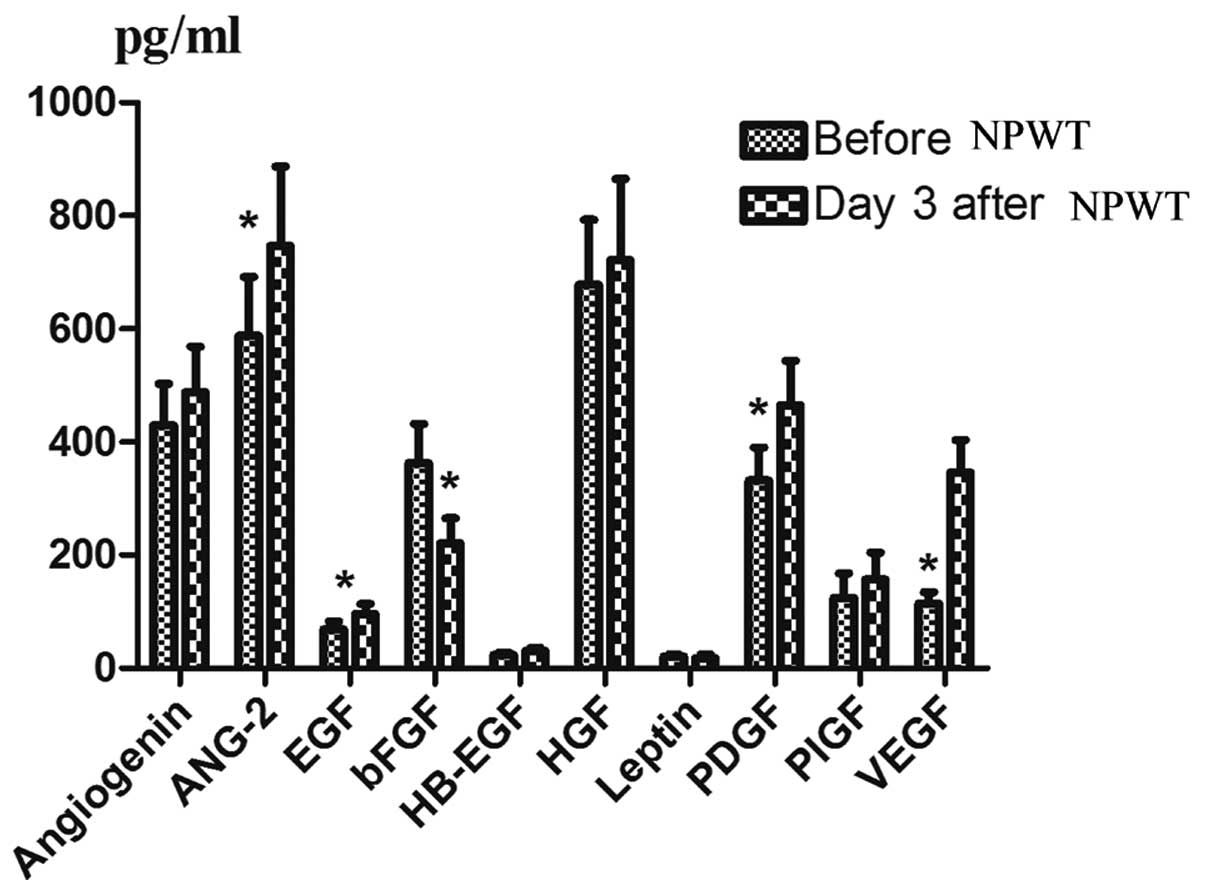Analysis of blood flow and local expression of angiogenesis‑associated growth factors in infected wounds treated with negative pressure wound therapy
- Authors:
- Published online on: February 28, 2014 https://doi.org/10.3892/mmr.2014.1997
- Pages: 1749-1754
Metrics: Total
Views: 0 (Spandidos Publications: | PMC Statistics: )
Total PDF Downloads: 0 (Spandidos Publications: | PMC Statistics: )
Abstract
Angiogenesis is involved in the wound healing process. Increased angiogenesis and blood flow constitute a major mechanism of negative pressure wound therapy (NPWT), which has been shown to facilitate the healing of infected wounds. However, the effect on the expression of angiogensis‑related growth factor remains unknown. The goal of the current study was to investigate the angiogenic factor levels prior to and following NPWT in infected wounds. A total of 20 patients with infected wounds treated with NPWT were included in the study. Patients acted as their own control; the postoperative measurements of patients were considered as the experimental group, while preoperative measurements were considered as the controlled group. Blood flow was recorded prior to and during NPWT. A total of 10 angiogensis‑related growth factors were detected using a protein biochip array to analyze the change in protein levels prior to NPWT, and on the third day during NPWT. All wounds were successfully reconstructed by skin grafting or using local flaps following NPWT. NPWT resulted in significantly increased blood flow in the wound. There was a significant increase in vascular endothelial growth factor (VEGF), EGF, platelet‑derived growth factor and angiotesin‑2 following NPWT, while basic fibroblast growth factor decreased significantly. NPWT affects the local expression of angiogenesis‑associated growth factors, which represents another mechanism to explain how NPWT accelerates wound healing.












